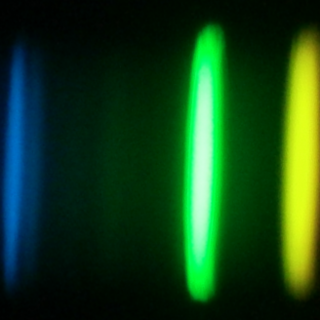Bibcode
Cunha, K.a; Smith, Verne V.; Hasselquist, Sten; Souto, Diogo; Shetrone, Matthew D.; Allende Prieto, C.; Bizyaev, Dmitry; Frinchaboy, Peter; García-Hernández, D. A.; Holtzman, Jon; Johnson, Jennifer A.; Jőnsson, H.; Majewski, Steven R.; Mészáros, Szabolcs; Nidever, David; Pinsonneault, Mark; Schiavon, Ricardo P.; Sobeck, Jennifer; Skrutskie, Michael F.; Zamora, O.; Zasowski, Gail; Fernández-Trincado, J. G.
Referencia bibliográfica
The Astrophysical Journal, Volume 844, Issue 2, article id. 145, 12 pp. (2017).
Fecha de publicación:
8
2017
Revista
Número de citas
101
Número de citas referidas
94
Descripción
Nine Ce ii lines have been identified and characterized within the
spectral window observed by the Apache Point Observatory Galactic
Evolution Experiment (APOGEE) survey (between λ1.51 and 1.69
μm). At solar metallicities, cerium is an element that is produced
predominantly as a result of the slow capture of neutrons (the
s-process) during asymptotic giant branch stellar evolution. The Ce ii
lines were identified using a combination of a high-resolution
(R=λ /δ λ ={{100,000}}) Fourier Transform
Spectrometer (FTS) spectrum of α Boo and an APOGEE spectrum (R =
22,400) of a metal-poor, but s-process enriched, red giant
(2M16011638-1201525). Laboratory oscillator strengths are not available
for these lines. Astrophysical gf-values were derived using α Boo
as a standard star, with the absolute cerium abundance in α Boo
set by using optical Ce ii lines that have precise published laboratory
gf-values. The near-infrared Ce ii lines identified here are also
analyzed, as consistency checks, in a small number of bright red giants
using archival FTS spectra, as well as a small sample of APOGEE red
giants, including two members of the open cluster NGC 6819, two field
stars, and seven metal-poor N- and Al-rich stars. The conclusion is that
this set of Ce ii lines can be detected and analyzed in a large fraction
of the APOGEE red giant sample and will be useful for probing chemical
evolution of the s-process products in various populations of the Milky
Way.
Proyectos relacionados

Nucleosíntesis y procesos moleculares en los últimos estados de la evolución estelar
Las estrellas de masa baja e intermedia (M < 8 masas solares, Ms) representan la mayoría de estrellas en el Cosmos y terminan sus vidas en la Rama Asintótica de las Gigantes (AGB) - justo antes de formar Nebulosas Planetarias (NPs) - cuando experimentan procesos nucleosintéticos y moleculares complejos. Las estrellas AGB son importantes
Domingo Aníbal
García Hernández

Abundancias Químicas en Estrellas
La espectroscopía de estrellas nos permite determinar las propiedades y composiciones químicas de las mismas. A partir de esta información para estrellas de diferente edad en la Vía Láctea es posible reconstruir la evolución química de la Galaxia, así como el origen de los elementos más pesados que el boro, forjados principalmente en los interiores
Carlos
Allende Prieto